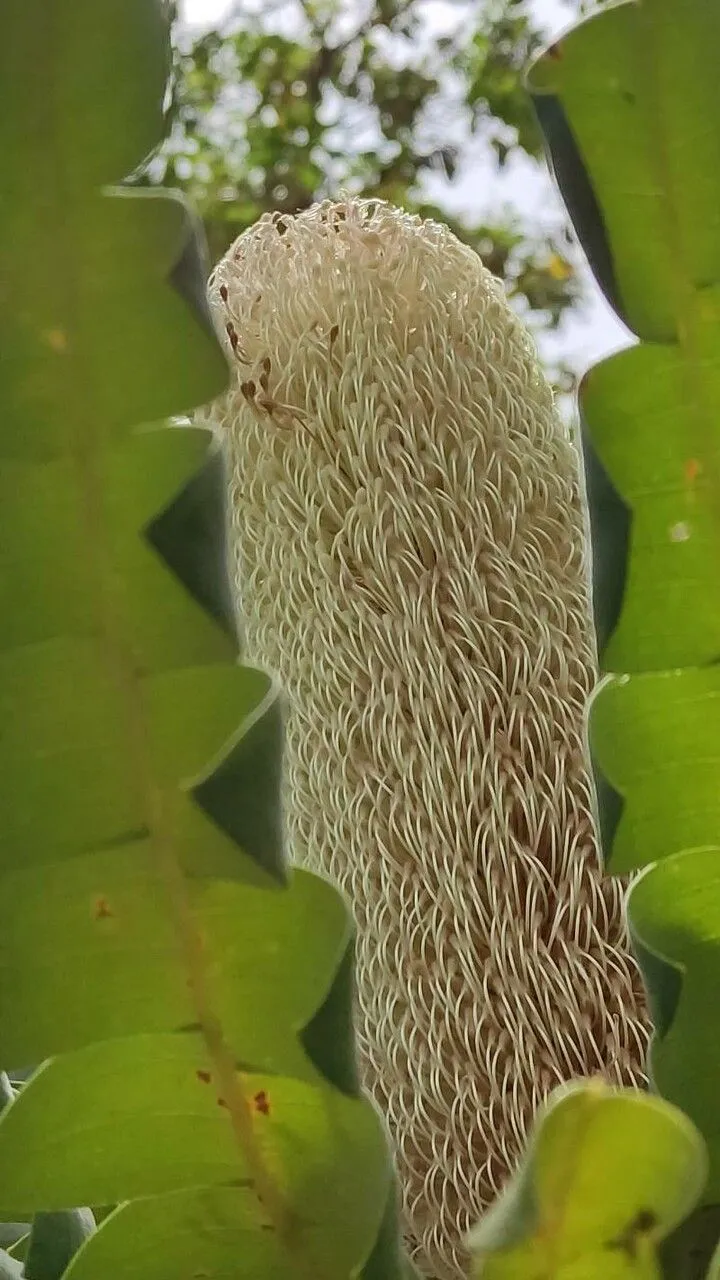
Author: Willd.
Bibliography: Sp. pl. 1(2):535. 1798
Year: 1798
Status: accepted
Rank: species
Genus: Banksia
Vegetable: False
Observations: SW. Western Australia
Mangite, scientifically known as Banksia grandis, is an iconic plant native to the southwestern region of Western Australia. First classified by the botanist Willdenow in 1798, Banksia grandis belongs to the Proteaceae family, a diverse and widespread plant family known for its unique and ornamental species.
In its native habitat, Mangite can be found thriving in a variety of soil types, often in sandy or lateritic environments typical of the region. The plant is well-adapted to the Mediterranean climate characteristic of southwestern Australia, which features wet winters and dry summers. This adaptation is evident in its impressive resilience and ability to regenerate after bushfires, a common occurrence in its natural habitat.
Mangite is characterized by its striking foliage and large, prominent flower spikes. The leaves are typically deeply lobed and can grow quite large, providing a distinctive visual appeal. The flower spikes, which can be up to 40 centimeters in length, are composed of numerous small flowers packed tightly together. These flower spikes are not only visually stunning but also play a crucial role in the plant’s reproductive cycle, attracting a range of pollinators, including birds, bees, and small mammals.
The bloom period for Banksia grandis usually occurs from late spring to early summer, during which time the plant becomes a focal point in the landscape, drawing in a multitude of pollinators. Following pollination, the flower spikes develop into woody cones that contain the plant’s seeds. These seeds are often released after exposure to fire, a fascinating ecological strategy that ensures the regeneration of the species in its native fire-prone areas.
Mangite is not only admired for its aesthetic qualities but also holds ecological significance. It is part of a larger ecosystem that supports a variety of wildlife, contributing to the biodiversity of southwestern Australia’s flora and fauna. Conservation efforts are important for this species, as it faces threats from habitat destruction and climate change.
In conclusion, Banksia grandis, or Mangite, is a remarkable and resilient plant species from southwestern Western Australia. Its striking appearance, unique ecological adaptations, and role in supporting biodiversity make it a notable member of the Proteaceae family and an important subject for conservation and study.
Eng: bull banksia, giant banksia
Swe: tjurbanksia
En: Mangite, Giant banksia, Bull banksia, Mangite Bull Giant Banksia
Zh: 锯叶斑克木
Fa: بانکسیای غولی
Sv: Tjurbanksia
Ta: நெருப்பை விரும்பும் செடி
Zh-hant: 鋸葉斑克木
Taken Jun 8, 2022 by Dieter Albrecht (cc-by-sa)
Taken Jul 23, 2022 by Michal Svit (cc-by-sa)
Taken Jun 8, 2022 by Dieter Albrecht (cc-by-sa)
Taken Oct 17, 2019 by Gerd Metz (cc-by-sa)
Taken Jun 8, 2022 by Dieter Albrecht (cc-by-sa)
© copyright of the Board of Trustees of the Royal Botanic Gardens, Kew.
© copyright of the Board of Trustees of the Royal Botanic Gardens, Kew.
Family: Myrtaceae Author: (F.Muell.) K.D.Hill & L.A.S.Johnson Bibliography: Telopea 6: 402 (1995) Year: 1995 Status:…
Family: Rubiaceae Author: Pierre ex A.Froehner Bibliography: Notizbl. Bot. Gart. Berlin-Dahlem 1: 237 (1897) Year:…
Family: Sapindaceae Author: Koidz. Bibliography: J. Coll. Sci. Imp. Univ. Tokyo 32(1): 38 (1911) Year:…
Family: Asteraceae Author: A.Gray Bibliography: Pacif. Railr. Rep.: 107 (1857) Year: 1857 Status: accepted Rank:…
Family: Fabaceae Author: Medik. Bibliography: Vorles. Churpfälz. Phys.-Ökon. Ges. 2: 398 (1787) Year: 1787 Status:…
Family: Aspleniaceae Author: (Cav.) Alston Bibliography: Bull. Misc. Inform. Kew 1932: 309 (1932) Year: 1932…